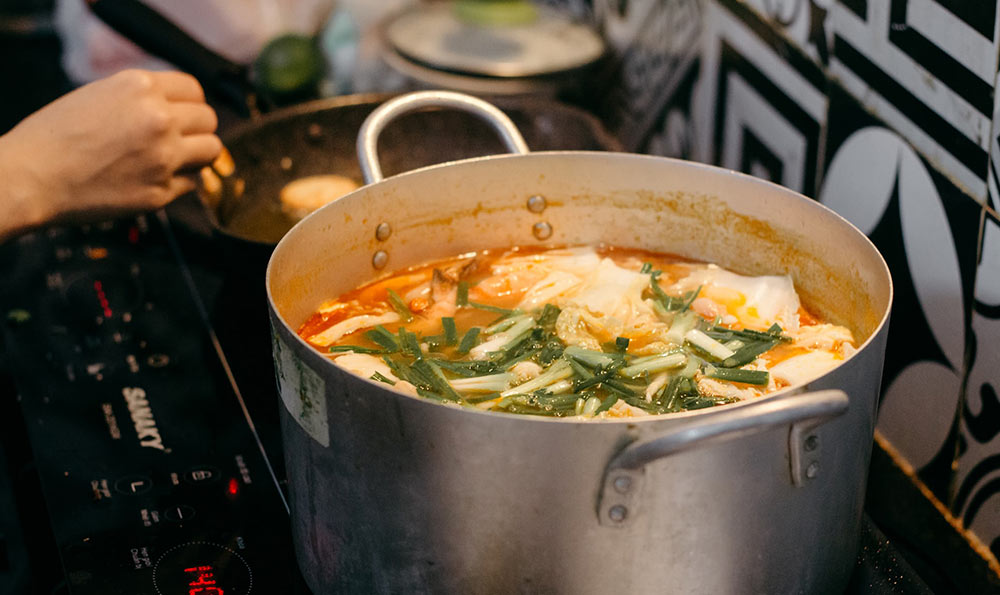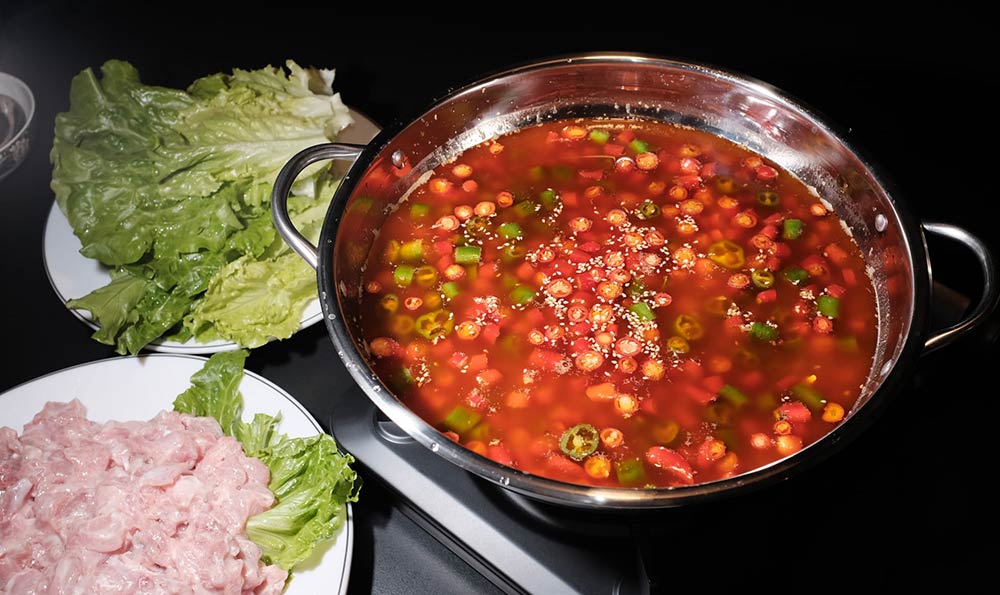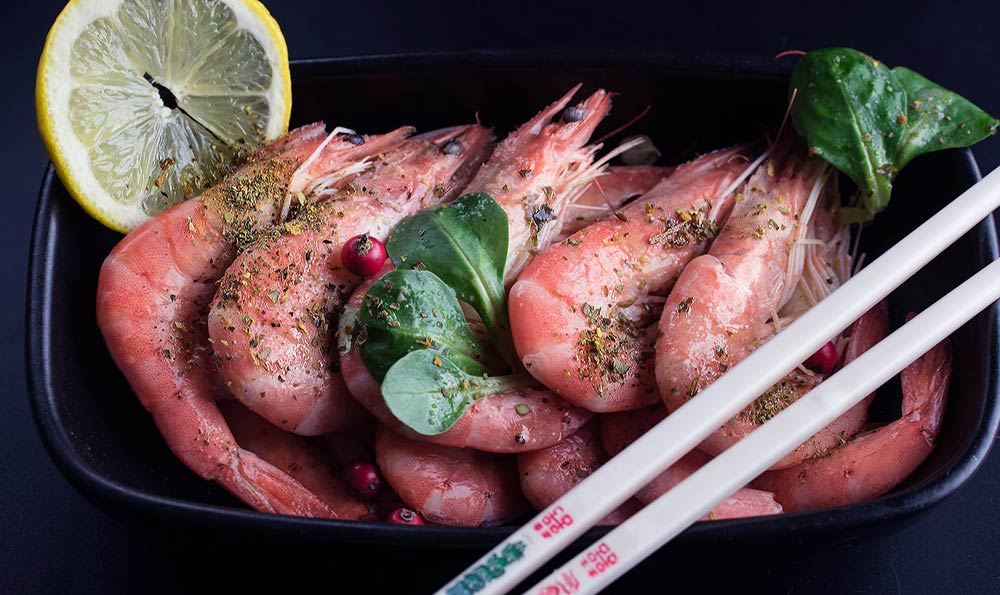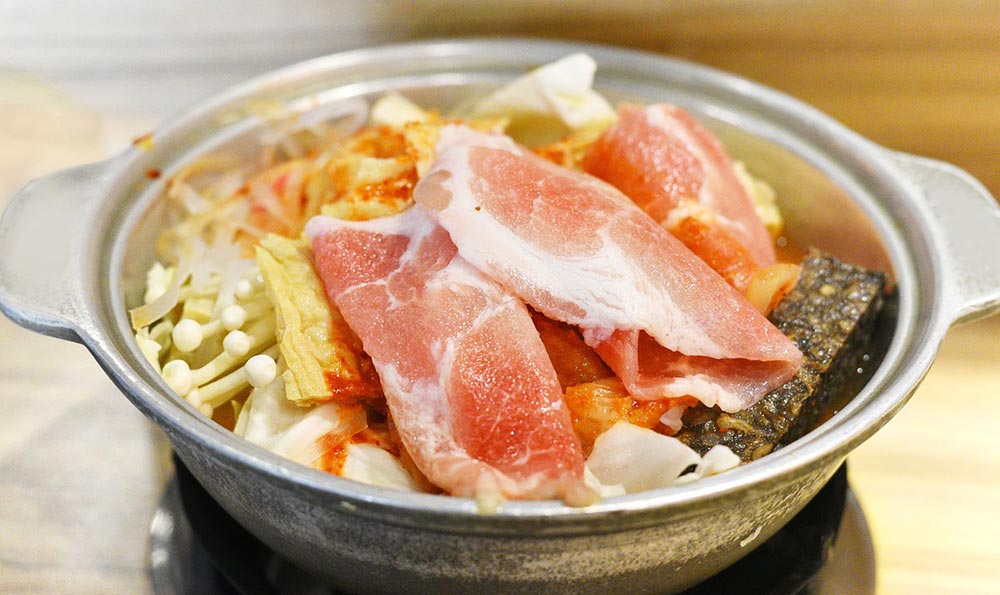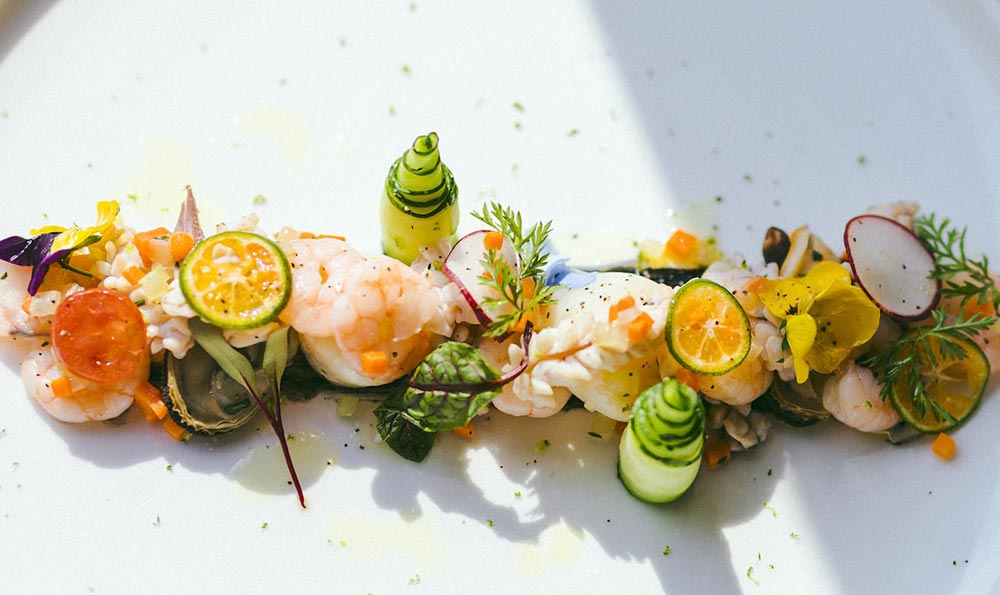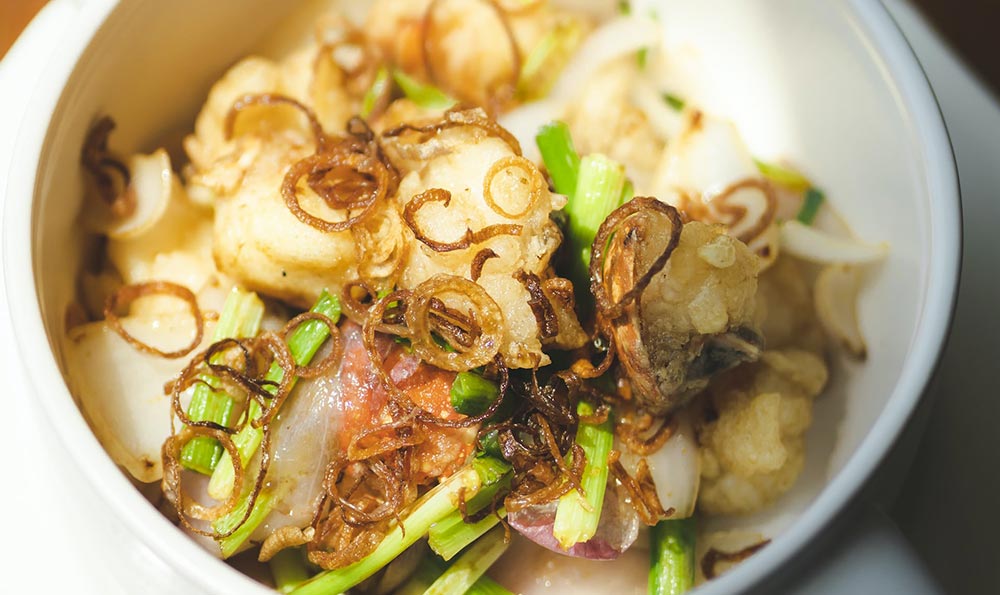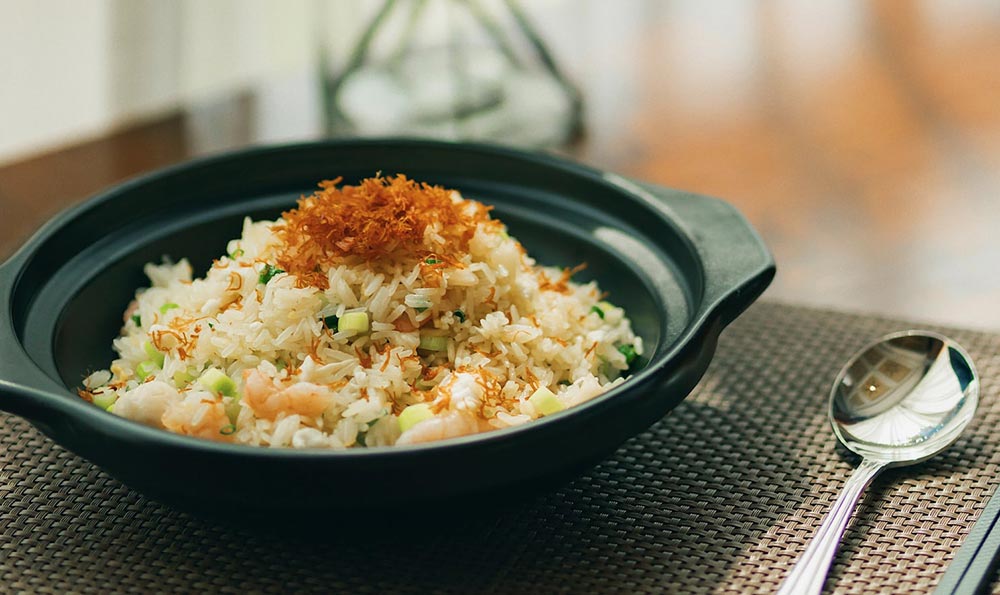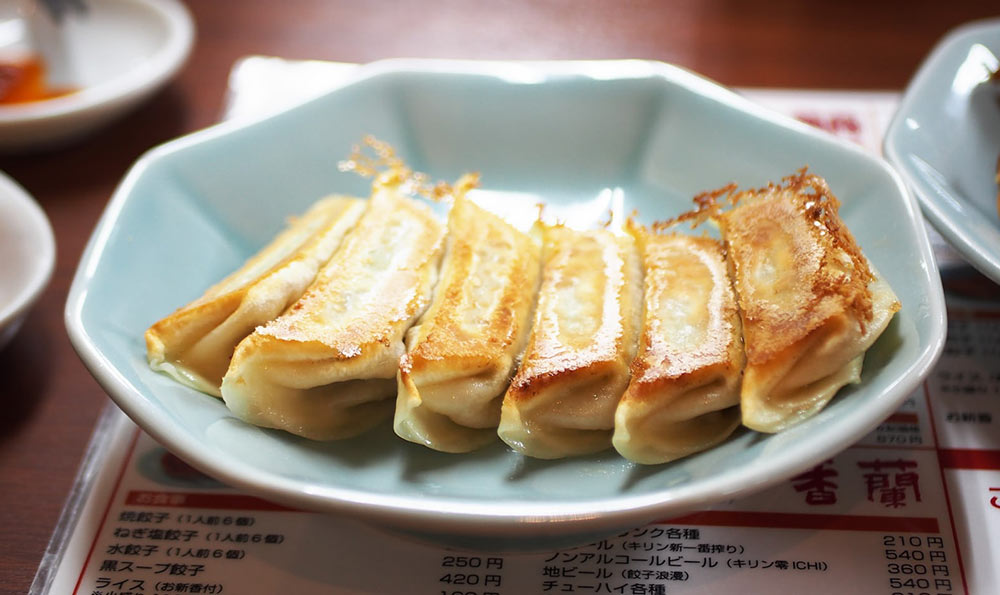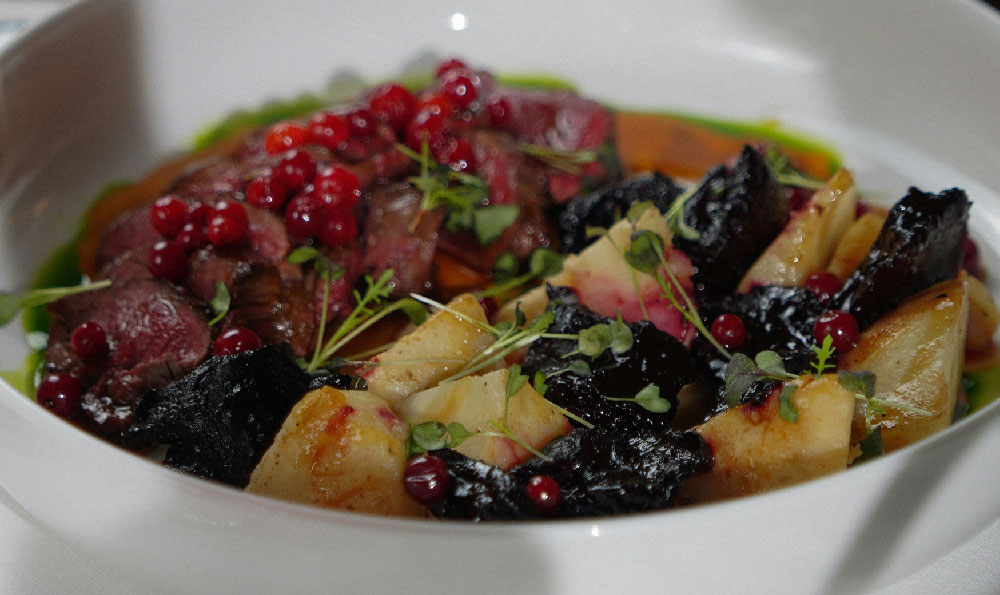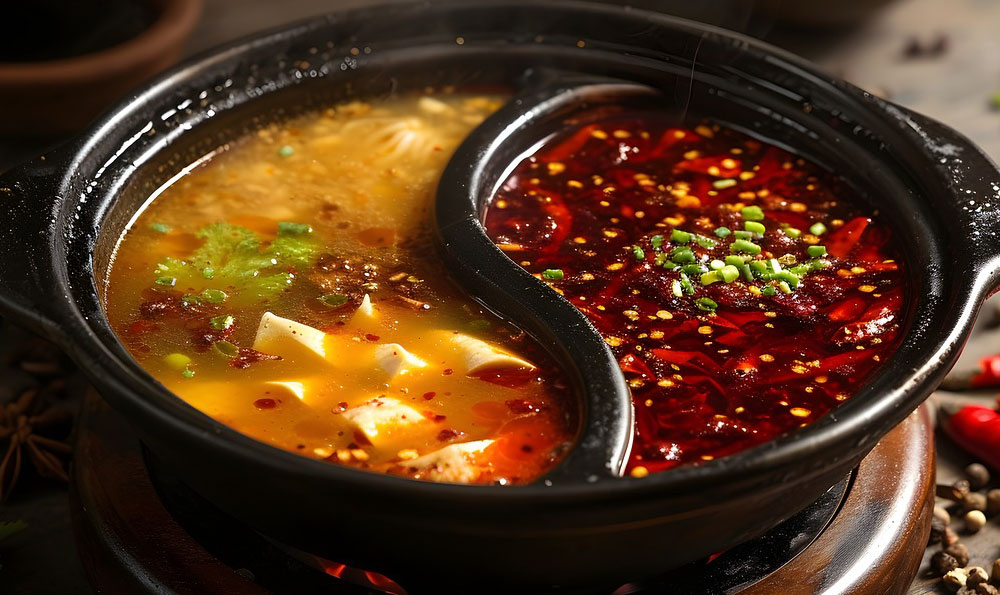
重庆火锅作为中国火锅文化的重要组成部分,以其麻辣、香浓的口味成为了中国餐饮界的一大特色。而在众多的重庆火锅中,正宗重庆老火锅川麻九宫格无疑是其代表之一。川麻九宫格火锅以其独特的九宫格造型和独特的口味特点,吸引了众多食客。本文将通过定义、分类、举例和比较等方法,详细阐述正宗重庆老火锅川麻九宫格的相关知识。
一、定义川麻九宫格火锅
正宗重庆老火锅川麻九宫格,是指以重庆老火锅为基础,融合了川菜和麻辣火锅的独特火锅品种。它将川菜的麻辣、香浓与火锅的鲜美、丰富完美结合,形成了一种独特的九宫格火锅。
二、分类九宫格造型
正宗重庆老火锅川麻九宫格的九宫格造型,是其独特之处。根据火锅内部的区域划分和食材分布,可以将川麻九宫格火锅分为主料区、配料区和调料区。主料区为内圈,放置着各种火锅主料,如肉类、海鲜等;配料区为中圈,放置着各种配菜,如豆腐、蔬菜等;调料区为外圈,放置着各种调味品,如麻油、辣椒油等。
三、口味特点
正宗重庆老火锅川麻九宫格的口味特点主要体现在麻辣风味和浓郁鲜美上。麻辣是川菜和麻辣火锅的代表特色,正宗重庆老火锅川麻九宫格火锅采用了川菜中的麻椒和辣椒,辣味浓郁,能够刺激味蕾,令人回味无穷。火锅的鲜美也是其独特之处,川麻九宫格火锅采用了各种新鲜的食材,如优质肉类和海鲜,使火锅的口感更加鲜美可口。
四、举例介绍
为了更好地阐述正宗重庆老火锅川麻九宫格的口味特点,我们来举个实际的例子。在川麻九宫格火锅中,主料区的肉类丰富多样,如牛肉、羊肉、猪肉等,肉质鲜嫩,口感十分美妙。在配料区,豆腐是不可或缺的,它能够吸收汤汁的鲜美,口感丰富。而调料区的调味品更是川麻九宫格火锅的灵魂所在,麻油和辣椒油的加入使火锅更加香浓,麻辣的味道令人回味无穷。
通过以上的阐述,我们可以看出正宗重庆老火锅川麻九宫格以其独特的九宫格造型和口味特点成为了重庆火锅界的一大亮点。川麻九宫格火锅集川菜和麻辣火锅于一体,既保留了传统火锅的特色,又增加了川菜的独特风味,给人们带来了全新的味觉享受。无论是在重庆还是在其他地方,正宗重庆老火锅川麻九宫格都是不可错过的美食选择。
重庆火锅独特的九宫格造型和口味特点

重庆火锅作为中国传统餐饮文化的代表之一,以其独特的九宫格造型和口味特点而闻名于世。本文将从定义、分类、举例和比较等方面来阐述重庆火锅的九宫格造型和口味特点,展示其鲜明的特色。
一、定义
重庆火锅是一种以滚烫的辣椒油为底料,以各种食材为原料,通过涮煮的方式烹制的特色火锅。它以“麻辣”为主,兼具鲜、香、辣、酸等多种口味,诱人食欲。
二、分类
1. 传统火锅:重庆火锅最经典的形式,采用红油和花椒为底料,滋味麻辣,吃起来辣而不燥,麻而不腻。代表菜品有毛肚、牛百叶、莴苣等。
2. 渝味火锅:渝味火锅是重庆火锅的变种,保留了经典的麻辣口味,但添加了重庆特色的泡菜、毛肚以及独特的调料,让口感更加浓郁。代表菜品有泡菜鸭血、重庆小面等。
3. 酸菜火锅:重庆火锅中的一种变种,以酸菜为底料,口味酸辣,清爽开胃,适合夏季食用。代表菜品有酸菜鱼片、酸菜牛肉等。
三、举例
1. 川菜风味:重庆火锅常与川菜搭配,融合了川菜的独特风味。川菜的辣椒和花椒调配合理,使得火锅的味道更加醇厚,吃起来更有层次感。
2. 特色食材:重庆火锅使用的食材多样,包括牛肉、羊肉、豆腐、毛肚、鸭肠等。这些食材经过火锅煮制后,能够保持鲜嫩的口感,同时吸收了火锅的浓郁味道,令人回味无穷。
3. 独特调料:重庆火锅的调料丰富多样,包括花椒油、豆瓣酱、蒜泥、香菜等。这些调料能够提升火锅的麻辣味道,同时增加了食材的层次感,让人吃出不同的口味。
四、比较
1. 火锅文化:重庆火锅作为中华餐饮文化的瑰宝,代表了中国人对食物的热爱和追求。与其他火锅相比,重庆火锅在调味品的选择和烹制的方式上更加独特,也更能传递出一种独特的文化氛围。
2. 口味特色:重庆火锅以其麻辣口味而著名,相比于其他地方的火锅,重庆火锅的辣味更加浓烈,更能激发人的味觉感官,让人欲罢不能。
3. 营养丰富:重庆火锅的食材种类繁多,包含了各种蔬菜、肉类、海鲜等,提供了丰富的营养物质,尤其是蔬菜的摄入,对于身体健康非常有益。
重庆火锅以其独特的九宫格造型和口味特点,成为了中国餐饮文化中的一颗璀璨明珠。正如其辣而不燥、麻而不腻的特点,重庆火锅给人带来了前所未有的美食体验。在多元化的饮食文化中,重庆火锅仍旧保持着其独特的地位,成为了许多人的饕餮之选。
重庆火锅九宫格的来历
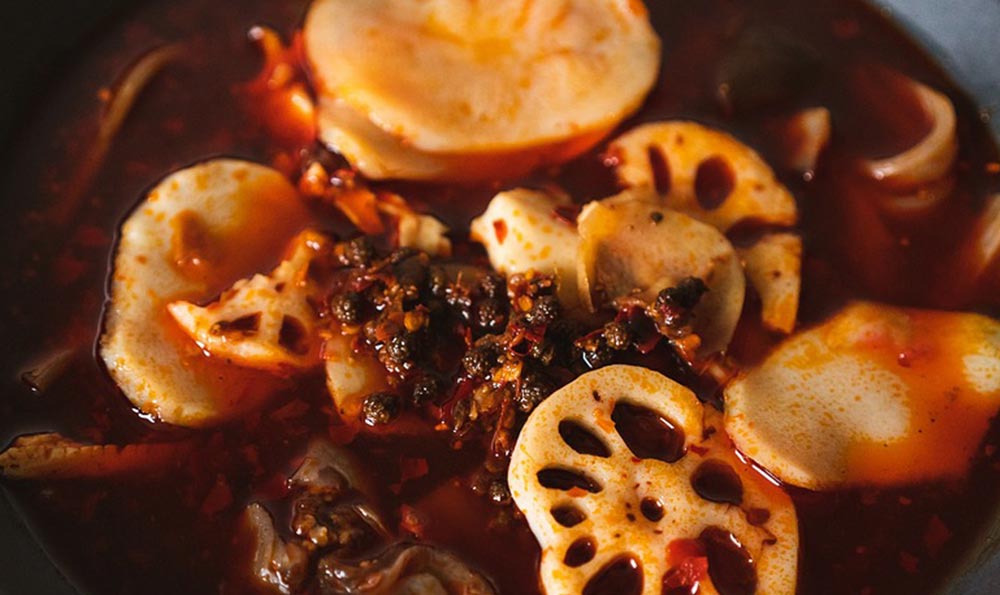
重庆火锅是中国传统的饮食文化代表之一,而火锅九宫格作为火锅的一种特殊形式,更是引起了人们的广泛关注。本文将以客观、专业、清晰和系统的方式阐述重庆火锅九宫格的来历,并通过定义、分类、举例和比较等方法,帮助读者全面了解这种火锅形式的相关知识。
九宫格火锅作为重庆火锅的一种变体形式,其来历可以从其独特的外观和烹饪方式来解读。九宫格形状鲜明,通常由一个大锅中心和八个小锅组成,这种布局使得每个用餐者都可以品尝到不同口味的汤底和配料。九宫格火锅在社交场合中非常受欢迎,各自独立的小锅使得每个人都能够自由选择自己喜欢的食材和调料,满足个性化的口味需求。
根据烹饪方式的不同,九宫格火锅可以进一步分为两种类型:一种是底部火锅和顶部汤锅相连的传统九宫格,另一种是九个独立的小火锅组成的现代九宫格。传统九宫格的优势在于可以将底部的汤汁循环流动,使得口味更加浓郁;而现代九宫格则更注重个性化的独立烹饪体验,每个小火锅都可以根据个人口味和喜好进行定制。
举例来说,传统九宫格火锅中的八个小火锅可以分别放置不同的调料和食材,比如牛肉、羊肉、海鲜等,每个小锅可以根据食材的特点和个人喜好进行独立调味,以满足不同食客的需求。而现代九宫格火锅则更加注重个人的独立享受,每个小锅都可以放置不同的调料和食材,让每个人都可以根据自己的喜好进行烹饪和品尝。
对比传统的大锅火锅来说,九宫格火锅的优势在于更好地满足了个人化的口味需求。大锅火锅通常将各种食材混合烹饪,味道相对统一,而九宫格火锅则可以使每个用餐者都可以根据自己的喜好进行烹饪和调味,呈现出更多元化的味觉体验。
通过本文的阐述,我们可以清晰地了解到,重庆火锅九宫格作为火锅的一种特殊形式,其来历可以从其独特的外观和烹饪方式解读。九宫格火锅通过其独特的布局和烹饪方式,满足了个性化的口味需求,成为人们社交聚会的热门选择。通过定义、分类、举例和比较等方法,我们对重庆火锅九宫格的相关知识有了更清晰的认识。
The Origin of Chongqing Hot Pot Grid
Introduction:
Chongqing hot pot is one of the representatives of China's traditional food culture, and the hot pot grid, as a special form of hot pot, has attracted wide attention. This article will objectively, professionally, clearly, and systematically explain the origin of Chongqing hot pot grid, using methods such as definition, classification, examples, and comparison, to help readers fully understand the relevant knowledge of this hot pot form.
Main Text:
The origin of the hot pot grid can be interpreted from its distinctive appearance and cooking method as a variant form of Chongqing hot pot. The grid shape of the hot pot is clear, usually consisting of a large central pot and eight small pots, allowing each diner to taste different flavors of broth and ingredients. Therefore, the hot pot grid is very popular in social occasions. Each independent small pot allows everyone to freely choose their favorite ingredients and seasonings, meeting individualized taste preferences.
Based on the different cooking methods, the hot pot grid can be further divided into two types: traditional grid with the bottom hot pot connected to the top soup pot, and modern grid consisting of nine independent small hot pots. The advantage of the traditional grid lies in its ability to circulate the broth at the bottom, making the flavor richer; while the modern grid focuses more on personalized independent cooking experience, allowing each small pot to be customized according to individual taste and preferences.
For example, in the traditional grid hot pot, the eight small pots can hold different seasonings and ingredients, such as beef, lamb, seafood, etc. Each small pot can be seasoned independently based on the characteristics of the ingredients and personal preferences, to meet the needs of different diners. The modern grid hot pot, on the other hand, emphasizes individual enjoyment. Each small pot can hold different seasonings and ingredients, allowing everyone to cook and taste according to their own preferences.
Compared to traditional large pot hot pot, the advantage of the hot pot grid lies in better meeting individual taste preferences. Large pot hot pot usually mixes and cooks various ingredients, resulting in relatively uniform flavors, while the hot pot grid allows each diner to cook and season according to their own preferences, presenting a more diversified taste experience.
Conclusion:
Through the elaboration in this article, we can clearly understand that the hot pot grid, as a special form of hot pot, can be interpreted from its distinctive appearance and cooking method. The hot pot grid meets individual taste preferences through its unique layout and cooking method, becoming a popular choice for people's social gatherings. Through methods such as definition, classification, examples, and comparison, we have gained a clearer understanding of the relevant knowledge of the Chongqing hot pot grid.

